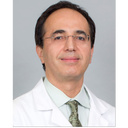For as long as i can rememberi have only been able to breathe through one nostril at a time it sometimes switches and this causes me to breathe loudly when and im not sure if its bad or normal but either way i want to fix this problem
Answers (16)
From board-certified doctors and trusted medical professionals
Dr. Jacob Sedgh, MD

Dr. Jacob Sedgh, MD
Board Certified Facial Plastic Surgeon
Answer
Dr. Steven J. Pearlman, MD, FACS

Dr. Steven J. Pearlman, MD, FACS
Board Certified Facial Plastic Surgeon
Answer
Dr. Andrew Miller, MD

Dr. Andrew Miller, MD
Board Certified Facial Plastic Surgeon
Answer
Dr. Matthew Richardson, MD

Dr. Matthew Richardson, MD
Board Certified Facial Plastic Surgeon
Answer
Dr. Ali Sajjadian, MD, FACS

Dr. Ali Sajjadian, MD, FACS
Board Certified Facial Plastic Surgeon
Answer
Dr. Elliot M. Heller, MD

Dr. Elliot M. Heller, MD
Board Certified Facial Plastic Surgeon
Answer
Dr. Parker A. Velargo, MD, FACS

Dr. Parker A. Velargo, MD, FACS
Board Certified Facial Plastic Surgeon
Answer
Dr. Daniel A. Barker, MD

Dr. Daniel A. Barker, MD
Facial Plastic Surgeon, Board Certified in Otolaryngology – Head and Neck Surgery
Answer
Dr. David Shamouelian, MD
Dr. David Shamouelian, MD
Board Certified Facial Plastic Surgeon
Answer
Dr. Sapna A. Patel, MD
Dr. Sapna A. Patel, MD
Facial Plastic Surgeon, Board Certified in Otolaryngology – Head and Neck Surgery
Answer
More Septoplasty Questions
See all Septoplasty Q&AWE SEND PRETTY
EMAILS
What’s trending? Who’s turning heads? Which TikTok myths need busting? We’ve got you. No fluff, no gatekeeping—just real talk. Get our free, unfiltered newsletter.